Bromeliads are stunning low maintenance plants that can be planted outdoors in frost free climates.
Caring for outdoor bromeliads is fairly straightforward, as long as the temperature and conditions are suitable.
In this article I’ll share my tips for growing bromeliads outdoors in your garden.
This post contains affiliate links. Please read the disclosure for more info.
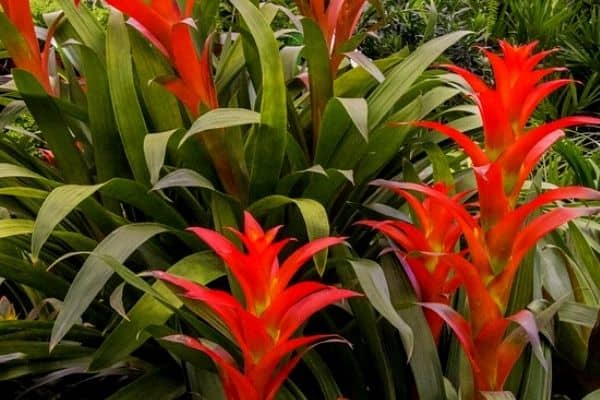
How to grow bromeliad plants outdoors
Climate
Bromeliads grow best outdoors in warm climates with a temperature range of 70 ⁰F to 90 ⁰F (21 ⁰C to 32 ⁰C).
If you live in USDA zones 9 to 12 you can grow bromeliad plants outdoors in your garden year round.
Bromeliads aren’t frost tolerant, so if you live in a cool climate you can plant your bromeliads in pots and keep them outdoors during spring and summer and move them indoors when the temperature starts to cool down.
Place the pots on a plant stand with wheels to make it easier to move them around.
Bromeliads also grow well in greenhouses with bright, indirect light.
Location
Bromeliads can be planted outdoors in a spot that receives morning sun or dappled light during the day.
Try to keep them out of the hot afternoon sun because it will scorch the leaves.
Large bromeliads can be used as an attractive focal point in the garden, while lower growing varieties are excellent for ground covers underneath trees.
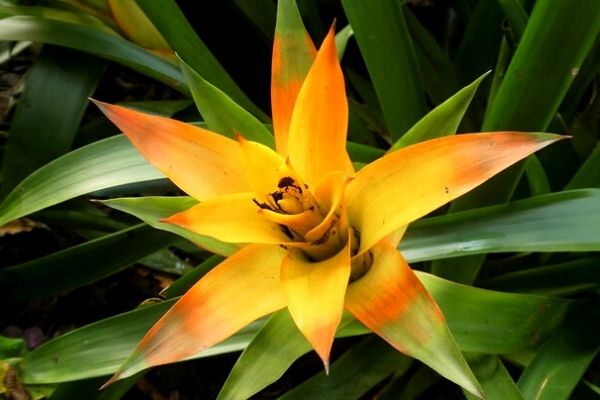
Moving an indoor bromeliad outdoors
Indoor bromeliads can be moved outside once the temperature has warmed up and there is no risk of frost.
You can gently ease the transition from indoors to outdoors by placing the plant outside in a spot with dappled light for a few hours at a time.
It’s best to do this in the morning before the temperature gets too hot.
Gradually increase your bromeliads outdoor time until it gets used to the new conditions.
Be careful of sudden cold snaps and if the temperature falls below 50 ⁰F (10 ⁰C) you’ll need to bring the plant back indoors until the temperature warms up again.
Planting bromeliads outdoors
Choose a sheltered spot in the garden that receives dappled or morning sunlight.
Bromeliads like soil that drains easily, so if you have heavy clay soil you’ll need to amend the soil with compost before planting.
Dig a hole that is large enough to comfortably fit the roots and place the plant in the bottom of the hole.
Cover the roots with soil and give the plant a deep watering.
If you’re planting multiple bromeliads, space them out at least one foot (30 cm) apart for smaller varieties or up to 3 feet (90 cm) apart for larger varieties.
Water
Bromeliads grow best in soil that is evenly moist but not waterlogged.
Avoid letting the soil become too soggy because it will cause the roots to rot.
Also, avoid filling the center of the plants with water to reduce the risk of crown rot.
Give the plant a deep watering every two weeks and check the soil with your finger to make sure that it’s dried out slightly before watering again.
Fertilizer
Bromeliads growing in the garden generally don’t need a lot of fertilizer but you can use a weak liquid fertilizer during spring and summer while the plants are actively growing.
Dividing bromeliads
Bromeliads produce small baby plants known as pups or offsets at the base of the plant once they’ve finished flowering.
These offsets can be separated from the mother plant and repotted or planted elsewhere in the garden.
It’s best to wait until the offset is about one-third of the size of the mother plant before dividing.
Pests
Outdoor bromeliads can be affected by a number of different pests.
Spider mites are one of the most common bromeliad pests.
They look like yellow or brown spots on the leaves.
Mealybugs are small, white fuzzy insects that damage the leaves by sucking the juices from the plant.
Scale are small insects that look like little brown lumps or spots on the leaves.
If you spot an infestation on your bromeliads you’ll need to take action quickly to get it under control.
Wipe the leaves with a damp cloth to remove as many of the insects as possible and then spray the leaves with a neem oil spray or insecticidal soap once a week to get rid of the rest of the pests.
Spray the plants in the evening when the temperature is cooler to avoid burning the leaves.
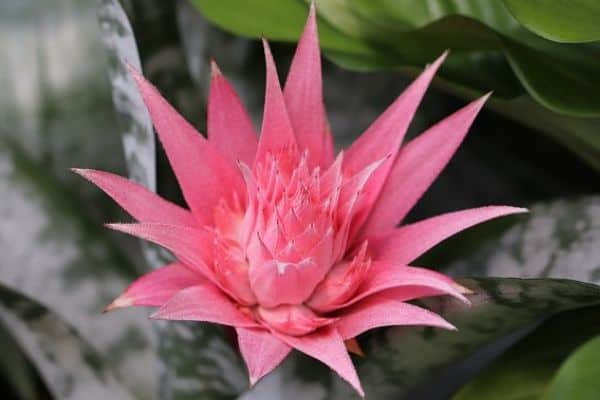
How tall do bromeliads grow outdoors?
Most bromeliads grow 2 to 3 feet (60 to 90 cm) tall but there are many different varieties of bromeliad ranging in height from as small as one inch (2.5 cm) up to 10 feet (3 metres) tall. [1]
Aechmea conifera is one of the largest bromeliad varieties, growing up to 10 feet tall and wide.
Can bromeliads tolerate full sun?
Bromeliads originated in the tropical rainforests of Central and South America so their preferred location is underneath the canopy of other trees.
Try to avoid planting bromeliads in a spot that receives full sun because the leaves will scorch, especially in the hot summer months.
Are bromeliads frost tolerant?
Bromeliads can’t tolerate freezing weather or frosty conditions, so if you live in a cool climate area you’ll need to plant your bromeliads in pots and move them inside in fall when the temperature starts to cool down.
RELATED ARTICLES
- How To Grow Peace Lilies Outdoors
- How To Grow Snake Plants Outdoors
- 12 Summer Blooming Perennial Flowers
So there are my tips for growing and caring for bromeliads outdoors.
If you live in an area with warm temperatures you can enjoy these stunning plants in your garden year round, otherwise plant them in pots and enjoy them indoors while the weather is cold outside.
Have you had success growing bromeliad plants outdoors? Let me know in the comments below.
Are you on Pinterest? I have boards dedicated to Home Gardens and Garden Ideas that you may enjoy. You can also find me on Facebook.
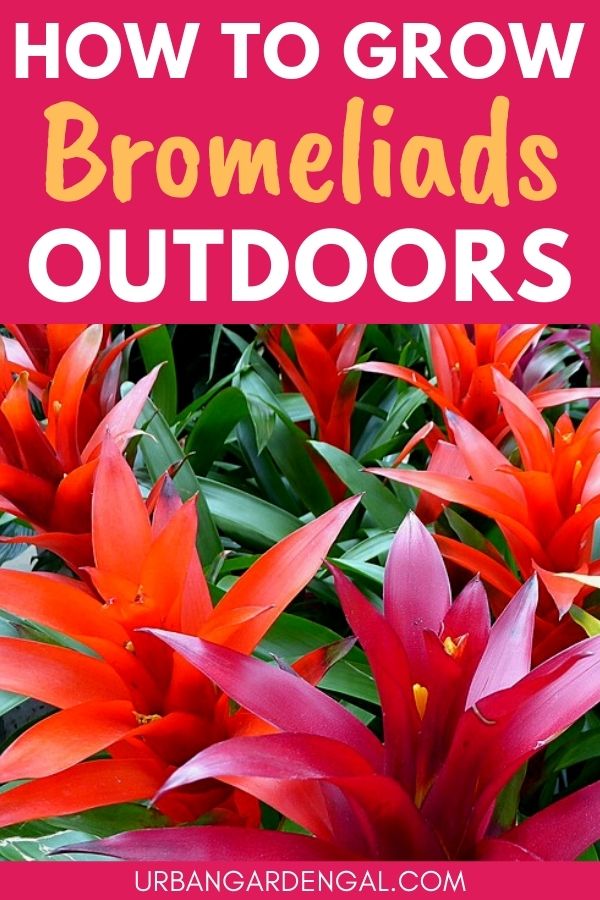

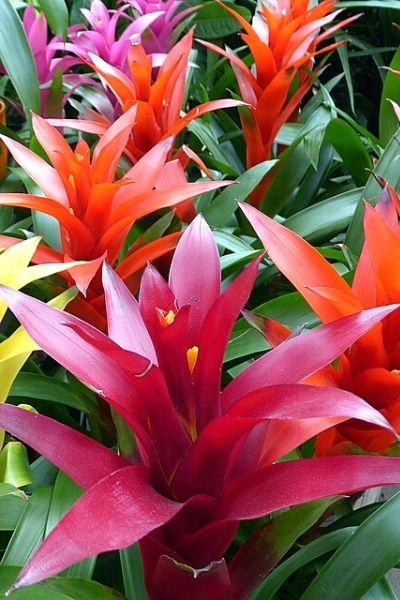
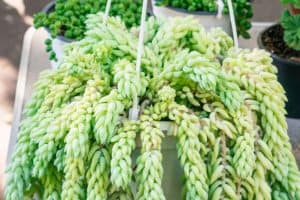
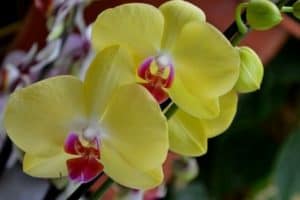


I have been growing bromeliads outside for 20 years. They grow like weeds in my yard in Palm Harbor, FL. In fact, I have to cut them back, divide them and throw away many of them 1-2 times/year because they get too big. I use them as a path border. The blooms are about 2-3 feet tall because the bases are so huge. The only thing I do with them is scatter mosquito donuts now and then because the plants are breeding grounds for mosquitoes.
Gosh, send your castoffs to me in Bowling Green, KY. I will hover and cherish and love and nourish
your lovely plants and decorate my house with them from September-April, as I do with so many of my garden plants, now years old and thriving! All the very best, Paula
Just love these plants. A friend gave me eight huge clumps, each has 5-8 individuals. They were outside in Gainesville,Fl., now will live about an hours drive south in Ocala, Fl. I’ve been reading up on them, learning tons. What I am learning doesn’t match up, so now I have questions.
1. Each location is frost prom, yet these are strong and healthy
2. Each location is over 90 for months, they were in shade?
3. No one ever drained them or watered them, unless nature did?
My goal is to attach several to my Cherry Laurel, then plant some under the same tree. Last year we had 3 frost, I’m wondering if I should even try this now? Yet they did so well north of here. Advice please, Cathy